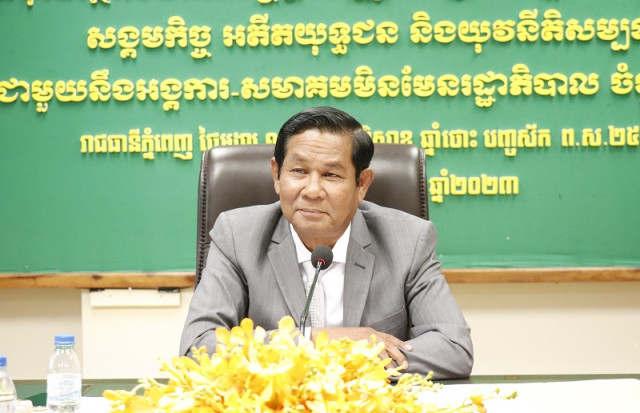RCEP, Cambodia-China FTA inject new impetus into Cambodia's agricultural development

- By Xinhua News Agency
- December 27, 2022 10:34 AM
PHNOM PENH -- The Regional Comprehensive Economic Partnership (RCEP) and the Cambodia-China Free Trade Agreement (CCFTA) have injected a new impetus into the development of Cambodia's agriculture, Cambodian Minister of Agriculture, Forestry and Fisheries Dith Tina has said.
Both RCEP and the CCFTA have been in effect since January 2022.
"RCEP and the CCFTA are all free trade agreements that mutually open the market in all participating countries, thus giving farmers choices to export their agricultural products to various countries," he told Xinhua in a recent interview.
"Both FTAs will contribute not only to the agriculture sector's growth, but also to the farmers' welfare and prosperity," he said.
Agriculture is one of the four pillars supporting Cambodia's economy. The sector contributed 24.4 percent to the country's gross domestic product (GDP) in 2021.
In a Cambodia Economic Update report released early this month, the World Bank said RCEP and the CCFTA have enhanced Cambodia's agricultural production and agro-processing industries.
"Agricultural production and agro-processing industries continue to be boosted by (these) newly ratified free trade agreements," the report said.
It said that China is an increasingly important export destination for Cambodia's agricultural commodities thanks to the CCFTA.
"For the Chinese market, bananas, milled rice, and cassava are the three largest agricultural commodity export items," the report said.
Under the CCFTA, over 90 percent of tariff lines of trade in goods for both sides enjoy zero tariff, the report said.
"The CCFTA is also expected to attract more foreign investors, especially the Chinese, to the country," World Bank senior country economist Ly Sodeth said.
The report said the Chinese-invested Phnom Penh-Sihanoukville Expressway, which was put into operation last month, has also added momentum to the development of the travel, transport and logistics industry in the Southeast Asian country.
Ministry of Commerce Undersecretary of State and Spokesman Penn Sovicheat said RCEP and the CCFTA are a key instrument to help boost the post-COVID-19 pandemic economic recovery.
"These trade pacts are very beneficial to Cambodia as it has provided the country with larger market access with tariff concessions," he told Xinhua. "For the long term, they will be a key driving force for our economic growth."
Senior economist Ky Sereyvath, director-general of the Institute of China Studies at the Royal Academy of Cambodia, said the two trade pacts are magnets to attract foreign investors to the kingdom.
"For RCEP, it has served as a catalyst for regional economic recovery in the post-pandemic era," he told Xinhua. "In the long term, I believe that it will become a new center of gravity for global trade."
RCEP comprises 15 Asia-Pacific countries including 10 ASEAN member states -- Brunei, Cambodia, Indonesia, Laos, Malaysia, Myanmar, the Philippines, Singapore, Thailand and Vietnam -- and their five trading partners, namely China, Japan, South Korea, Australia and New Zealand.















